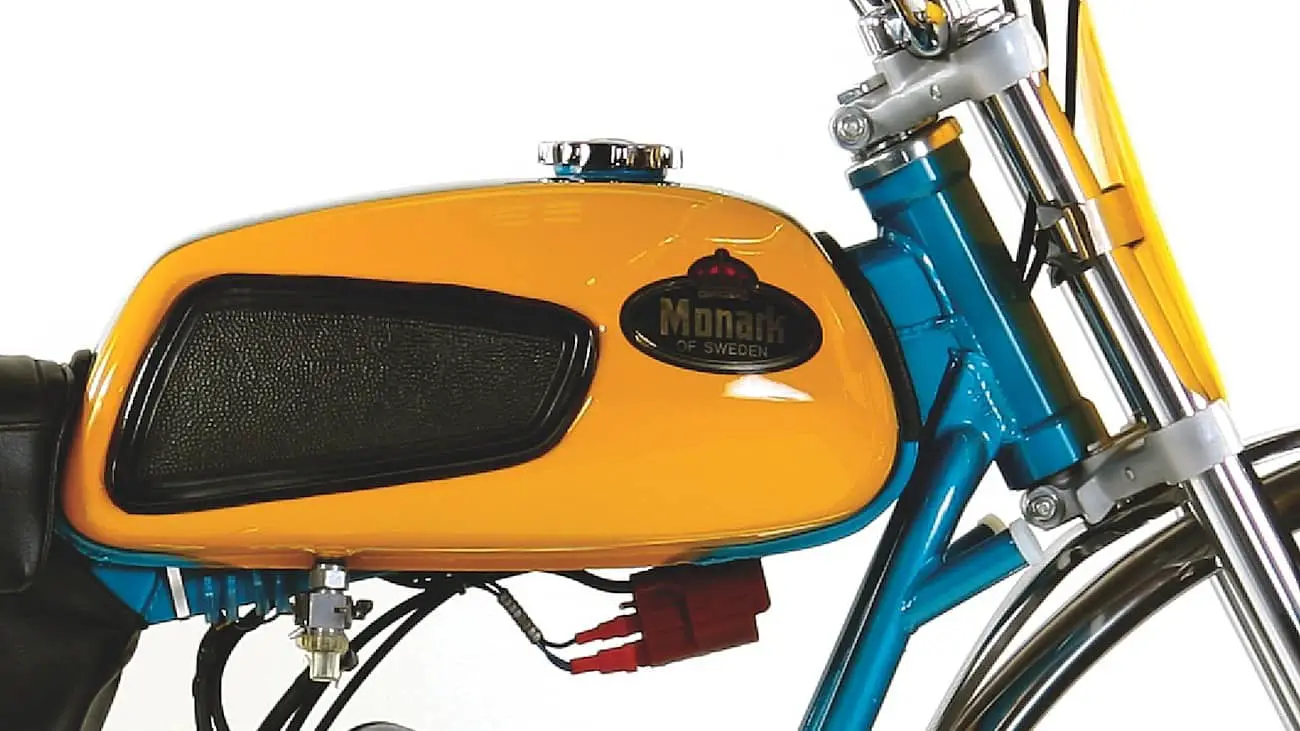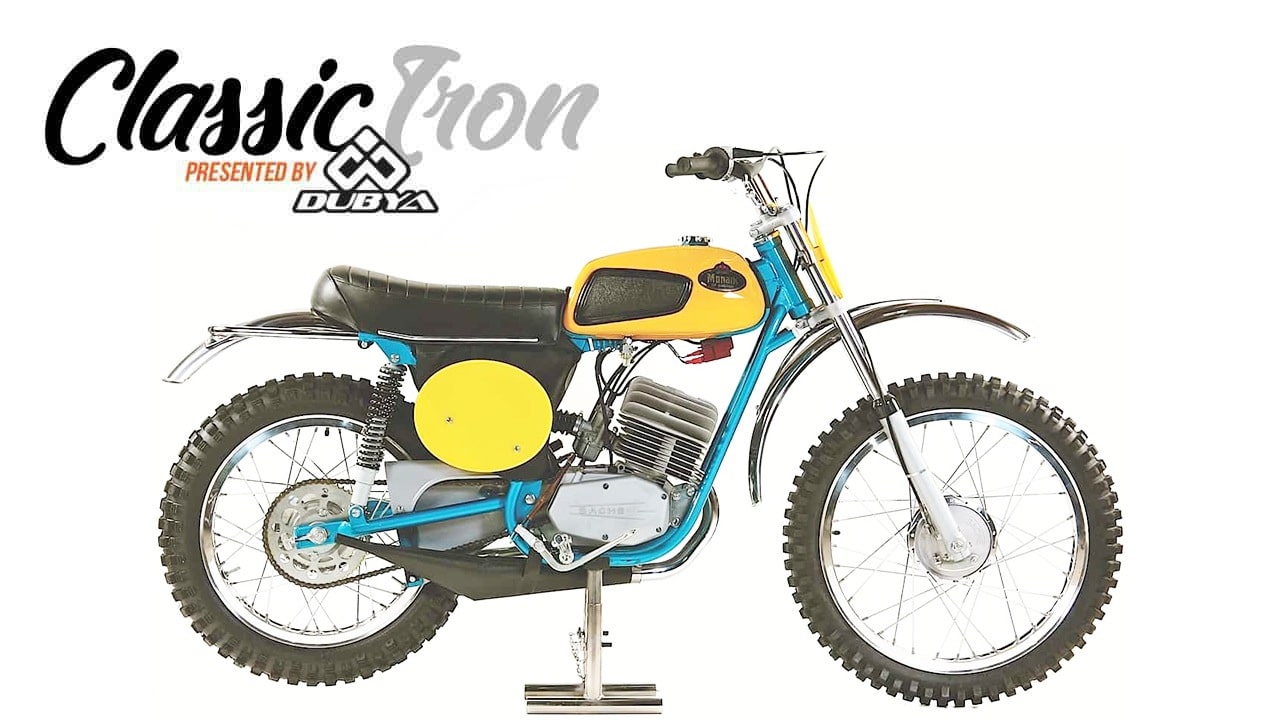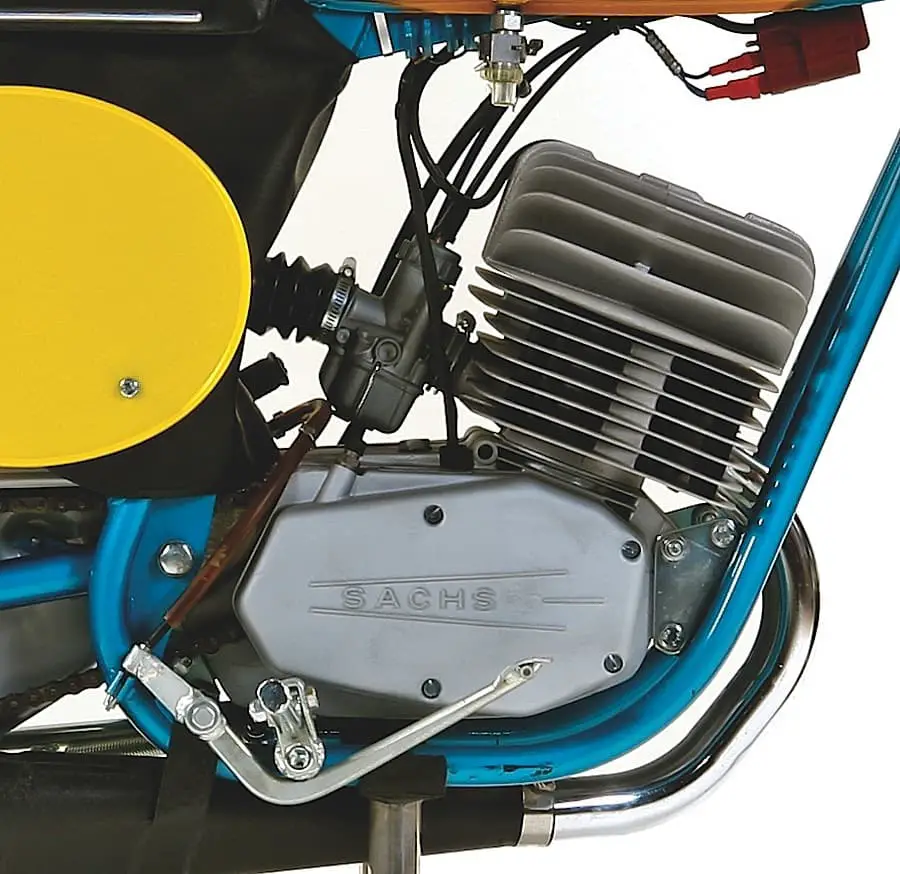CLASSIC MOTOCROSS IRON: 1971 MONARK 125MX
“Out-of-the-box winner”— that is exactly how Monark marketed its motocross machines. The 21-horsepower, six-speed, 54mm x 54mm Sachs 6B engine came with a Motoplat transistorized ignition and a 27mm Bing carb. A chromoly frame, Ceriani forks and Girling shocks were just some of the high-quality components used in this fabulous machine.
Monark was known as Cykelfabriken Monark AB until 1927 and Monark Cresent Bolagen (MCB) after that. Monark built its first motorcycle in 1908. In 1959, the company hand-built a handful of 500cc four-stroke motocross bikes and won the 1959 500cc World Championship with Sten Lundin in the saddle. Lundin’s victory was both the highlight and the end of the road for Monark. It ceased motorcycle production in 1960.
In 1972, the Monark 125MX was the envy of every 125 rider. Monark had its greatest success since 1959 when Marty Smith finished second at the 1973 125 National Championship race at Arroyo Cycle Park (now called Glen Helen); Ray Lopez won the event on a Penton. After Honda introduced the CR125 Elsinore, Monark sales dropped and the company made its last bike in 1976.
The suggested retail price was $975.00. Our Early Years of MX Museum Monark was restored by Bill West and is valued at $10,000. You could special order a 100cc model factory direct for an additional $100. In 1973, Monark introduced the GS and GS Pro models that featured 24 horsepower. The GS models had a lemon-yellow gas tank, whereas the MX models had orangish tanks. GS models were the last hurrah for the Swedish brand.
HOW TO TELL A MONARK 125MX FROM A GS OR GS PRO
The suggested 125MX retail price in 1972 was $975. The more powerful GS model (GS stand for “GelandeSport”), which came in 1973, cost $1165. There was even a GS Pro in 1974 that retailed for $1365. How can you tell a 125MX from a 125GS or GS Pro? (1) The 125MX had a screw-cap Bing carb, while the GS model has two screws holding the cap on. (2) The 125MX models came with two-piece downpipes (chrome front and mild steel rear). The GS models came with one-piece down pipes. (3) The 125MX had chrome steel fenders, while the GS models had yellow plastic fenders. (4) All Monark 125GS models had lemon-yellow gas tanks, but the 125MX tank was a darker yellow than the GS or GS Pro tank (and the 1975–’76 tanks were solid yellow and mimicked a CR125 shape). (5) The 125MX engine ID was 6B (although there could be a few 5B engines around). The 125GS and GS Pro had a 6B GS ID. (6) The 125MX models came with a steel rear sprocket, while the GS models had aluminum sprockets. (7) And, finally, the GS cylinder and head fins had holes drilled in them to accept the ISDT leaded bands (to seal the engine). Of the 3480 Monarks produced from 1970 to May of 1976, only 1100 came to the USA—approximately 110 of those were GS models. 
What should collectors look for? Besides the Ceriani forks, Girling shocks and 27mm Bing, make sure it has the original Akront rims. The standard Trelleborg tires are nearly impossible to find, as are the stainless steel fenders of the pre-’73 bikes. If the standard expansion chamber in the two-part exhaust is in good shape, that is a real bonus!
For more info on classic bikes go to www.earlyyearsofmx.com







Comments are closed.